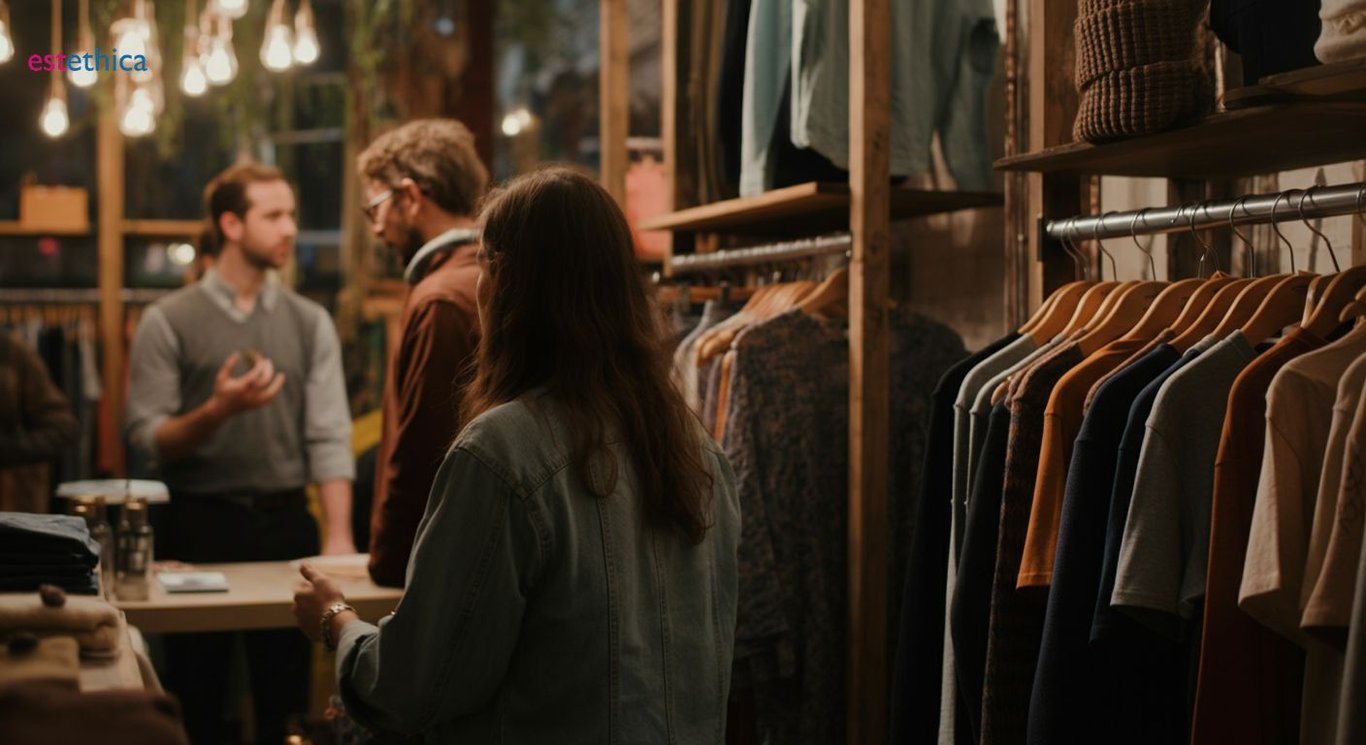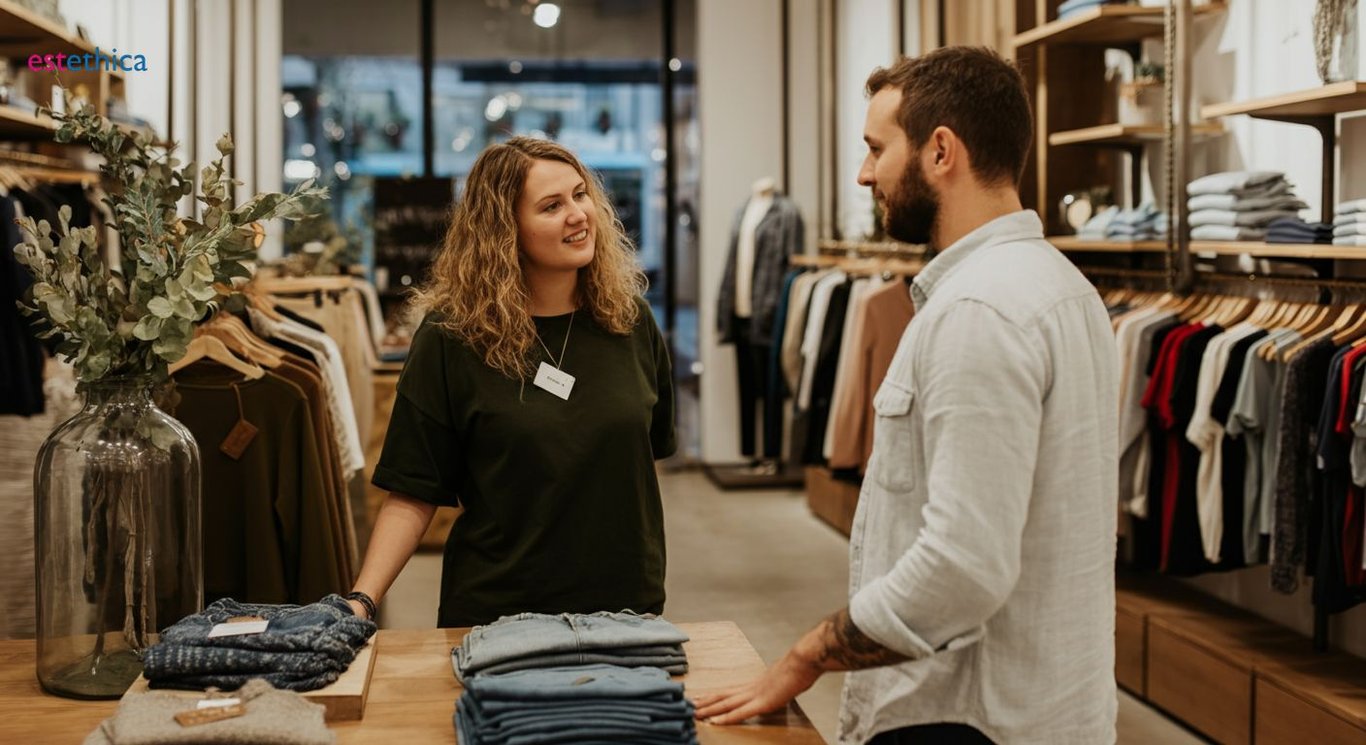Discover the Essence of Sustainable Fashion
Discover how sustainable fashion transforms style with eco-friendly choices and ethical brands.
Sustainable fashion is more than a trend; it is a movement toward mindful living and environmental stewardship. As we explore the realm of eco-friendly clothing, we uncover the profound impact of our clothing choices on the planet's health. Join us on this journey to discover how sustainable fashion not only serves as a medium for style but also champions ethical practices and sustainable innovations.
Understanding the Core of Sustainable Fashion
Key Characteristics of Sustainable Fashion
Sustainable fashion is defined by its commitment to reducing environmental impact and promoting ethical labor practices. It involves using eco-friendly clothing materials like organic cotton and recycled fabrics, which minimize harm to ecosystems. For instance, brands like Patagonia and Eileen Fisher focus on using sustainable materials and ensuring fair wages for workers. This approach not only supports environmental health but also fosters social responsibility within the fashion industry.
Benefits of Choosing Sustainable Fashion
- Reduces carbon footprint by using less energy-intensive production methods.
- Supports ethical fashion brands that prioritize fair labor practices.
- Promotes the use of renewable resources, contributing to a healthier planet.
By choosing sustainable fashion, consumers can actively participate in a movement that values both people and the planet. This shift in consumer behavior is crucial for driving change in the fashion industry.
Steps to Embrace Sustainable Fashion
- Research and identify ethical fashion brands that align with your values.
- Opt for eco-friendly clothing materials such as organic cotton and bamboo.
- Support local sustainable fashion stores to reduce transportation emissions.
Embracing sustainable fashion involves making informed choices and supporting brands that prioritize environmental and social responsibility. This conscious approach not only benefits the planet but also encourages the fashion industry to adopt more sustainable practices.

Choosing Eco-Friendly Clothing: A Guide
Evaluating Eco-Friendly Materials
Eco-friendly clothing materials are essential in sustainable fashion, offering a way to reduce environmental impact. Organic cotton, for example, is grown without harmful pesticides, preserving soil health. Recycled polyester, made from plastic bottles, reduces waste and energy consumption. Brands like Stella McCartney and People Tree are known for their commitment to using such materials, setting a standard in the industry.
Key Considerations for Eco-Friendly Clothing
- Look for certifications like GOTS (Global Organic Textile Standard) for assurance of organic practices.
- Choose brands that transparently share their supply chain and production processes.
- Consider the longevity and durability of materials to reduce frequent replacements.
By focusing on these aspects, consumers can make informed decisions that support sustainable fashion and ethical fashion brands. This approach not only benefits the environment but also encourages the fashion industry to adopt more responsible practices.
Steps to Identify Ethical Fashion Brands
- Research brand commitments to sustainability and ethical labor practices.
- Check for third-party certifications that validate eco-friendly claims.
- Engage with brands that actively participate in circular fashion initiatives.
Identifying ethical fashion brands involves a thorough evaluation of their practices and values. By supporting these brands, consumers contribute to a more sustainable and ethical fashion industry.

Spotlight on Ethical Fashion Brands
Innovative Practices in Ethical Fashion
Ethical fashion brands are pioneering innovative practices that set them apart in the industry. For example, Everlane is renowned for its "Radical Transparency" approach, where they openly share the true costs behind their products, including materials, labor, and transportation. This transparency builds trust with consumers and encourages other brands to adopt similar practices.
Another leader, Reformation, focuses on sustainable production by using eco-friendly clothing materials and minimizing waste. They have implemented a "RefScale" to track the environmental impact of each garment, providing consumers with insights into their purchases' sustainability. This initiative not only educates consumers but also holds the brand accountable for its environmental footprint.
Additionally, Veja, a brand known for its eco-friendly sneakers, sources materials like organic cotton and wild rubber from the Amazon, supporting local communities and preserving biodiversity. Their commitment to sustainable fashion extends beyond materials to include ethical labor practices, ensuring fair wages and safe working conditions for all workers involved in their supply chain.
Key Features of Leading Ethical Fashion Brands
- Commitment to transparency in production and pricing, fostering consumer trust.
- Use of sustainable materials and innovative tracking systems to measure impact.
- Support for local communities and ethical labor practices, ensuring fair treatment.
These features highlight the dedication of ethical fashion brands to not only produce eco-friendly clothing but also to promote social responsibility and transparency within the industry.
Steps to Support Ethical Fashion Brands
- Research brands that prioritize transparency and sustainability in their operations.
- Choose products made from eco-friendly materials and support brands with ethical labor practices.
- Engage with brands that actively contribute to community development and environmental conservation.
Supporting ethical fashion brands involves making informed choices and advocating for transparency and sustainability in the fashion industry. By doing so, consumers can drive positive change and encourage more brands to adopt ethical practices.

Exploring Green Fashion Trends
Innovative Approaches in Green Fashion
Green fashion trends are revolutionizing the industry by integrating sustainability with style. Circular fashion, for instance, emphasizes the reuse and recycling of materials to minimize waste. Brands like Mud Jeans and For Days are leading this movement by offering products that can be returned and recycled into new items, reducing the need for virgin resources.
Upcycled designs are another innovative trend, where designers transform discarded materials into new, fashionable pieces. This approach not only reduces waste but also showcases creativity and resourcefulness. Brands such as Rothy's and Elvis & Kresse are known for their upcycled products, turning plastic bottles and fire hoses into chic accessories.
Moreover, the rise of vegan clothing is reshaping the fashion landscape. By using plant-based materials like pineapple leather and mushroom fabric, brands are offering cruelty-free alternatives that appeal to conscious consumers. This trend aligns with the growing demand for ethical fashion brands that prioritize animal welfare and environmental sustainability.
Key Elements of Green Fashion Trends
- Emphasis on circular fashion to reduce waste and promote recycling.
- Innovative use of upcycled materials to create unique designs.
- Adoption of vegan clothing materials for cruelty-free fashion.
These elements highlight the dynamic nature of green fashion trends, which are not only eco-friendly but also stylish and innovative.
Steps to Embrace Green Fashion Trends
- Explore brands that specialize in circular fashion and upcycled designs.
- Choose vegan clothing options made from sustainable materials.
- Support initiatives that promote zero waste fashion practices.
By embracing these green fashion trends, consumers can contribute to a more sustainable future while enjoying stylish and ethical clothing options.
Innovative Practices in Sustainable Fashion
Embracing Green Fashion Trends for a Sustainable Future
Frequently Asked Questions
What are the key characteristics of sustainable fashion?
How can I choose eco-friendly clothing?
What are some innovative practices in ethical fashion brands?
What are the benefits of circular fashion?
How can I support ethical fashion brands?
Discover the Path to Healthy Beauty with estethica's Expert Care!
📞 Call Now for Your Free Consultation!